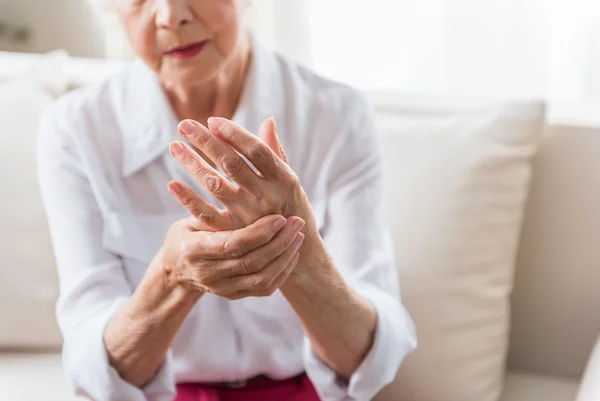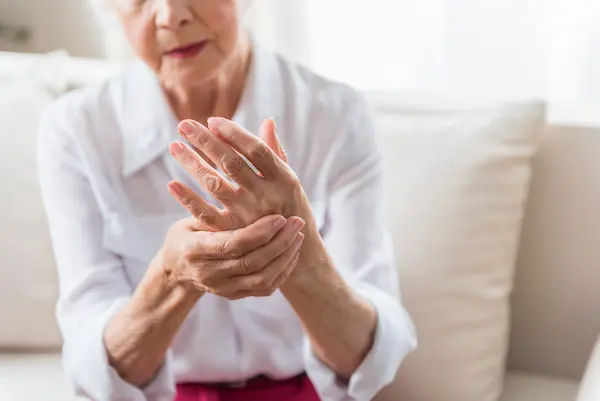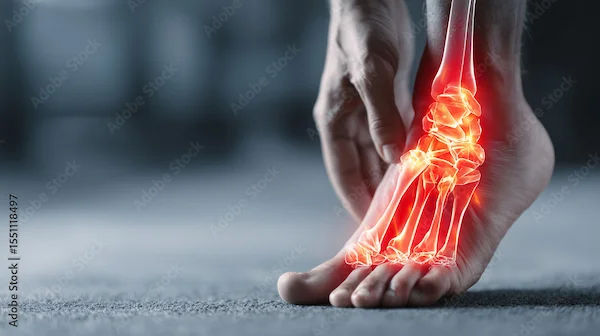Guide to Exercising Benefits For Arthritis
Discover how safe and effective exercises can significantly reduce arthritis pain, improve joint mobility, and boost your overall well-being. Get started with our expert guide.


Introduction
Living with arthritis often feels like a constant battle between pain and the desire to live an active life. For years, the common advice for aching joints was to rest them. But modern medicine has flipped this script entirely. We now know that exercise is one of the most powerful, non-drug treatments available for managing arthritis. It’s not about pushing through agony; it’s about moving smarter to build resilience, reduce pain, and reclaim your mobility. This guide will demystify the process, showing you exactly how the right kind of movement can lubricate stiff joints, strengthen supporting muscles, and significantly improve your quality of life. We’ll break down the science, provide a clear blueprint for different types of beneficial exercises, and offer practical tips to get started safely. Whether you have osteoarthritis, rheumatoid arthritis, or another form of joint disease, this article will equip you with the knowledge to harness the profound benefits of movement for your arthritis.
Why Moving More is the Best Medicine for Arthritis
Busting the Myth: Rest vs. Movement
The old belief that rest protects painful joints is not only outdated but can be harmful. Prolonged inactivity leads to muscle weakness, increased joint stiffness, and reduced range of motion, which ultimately worsens arthritis pain and disability. Movement, on the other hand, is essential for joint health. Think of it as a non-negotiable part of your treatment plan, as important as any medication.
The Science Behind the Relief: How Exercise Helps Your Joints
The benefits of exercise for arthritis are not just anecdotal; they are grounded in solid physiology. Here’s what happens inside your body when you move consistently.
Lubrication and Nutrition for Joints
Your joints are surrounded by a capsule filled with synovial fluid, which acts as lubricating oil for a machine. Movement stimulates the production and circulation of this fluid, ensuring cartilage—the cushioning at the end of your bones—gets the nutrients it needs and waste products are removed. Without movement, cartilage can become malnourished and brittle.
Strengthening Your Joint's Support System
Strong muscles act like shock absorbers for your joints. When the muscles around a joint (like the quadriceps for the knee) are weak, more stress is transferred directly to the joint itself. Strengthening these muscles provides better support and stability, reducing load and pain. This is a key component of managing osteoarthritis pain effectively.
Reducing Systemic Inflammation
For inflammatory types of arthritis like rheumatoid arthritis (RA), regular moderate exercise can help lower systemic inflammation markers in the body. Exercise also triggers the release of endorphins, your body's natural painkillers, which can improve pain tolerance and mood.
Consult Top Specialists
Tailoring Your Exercise Plan: The Four Pillars of Arthritis Management
A well-rounded exercise program for arthritis isn't just about one activity. It combines four key types of movement to address all aspects of joint health.
Range-of-Motion & Flexibility Exercises (e.g., Stretching, Yoga)
These exercises aim to take your joints through their full range of motion, combating stiffness. This should be done daily.
Examples: Gentle stretching, yoga, tai chi.
Benefits: Improves flexibility, reduces morning stiffness, and makes daily activities easier.
LSI Term Focus: Incorporating yoga poses for arthritis sufferers can be particularly effective for improving range of motion without high impact.
Strengthening Exercises (e.g., Bodyweight, Resistance Bands)
Strong muscles protect joints. Focus on exercises that target major muscle groups without putting excessive strain on the joints.
Examples: Leg lifts, wall sits, bicep curls with light weights or resistance bands.
Benefits: Provides stability to joints, decreases pain, and helps prevent further damage.
Keyword Integration: Strength training for arthritis management should be done 2-3 times per week on non-consecutive days.
Aerobic & Endurance Exercises (e.g., Walking, Swimming)
These are the exercises that get your heart pumping. For arthritis, low-impact cardio is essential.
Examples: Brisk walking, cycling, swimming, and water aerobics.
Benefits: Improves cardiovascular health, helps with weight management (reducing pressure on weight-bearing joints), and boosts mood and energy levels.
LSI Term Focus: The water aerobics benefits for joint pain are significant due to buoyancy, which supports your weight and minimizes stress.
Balance Exercises (e.g., Tai Chi, Single-Leg Stances
Arthritis, especially in the lower body, can affect balance and increase fall risk. Balance exercises are crucial for safety.
Examples: Tai Chi (excellent for this), standing on one foot, heel-to-toe walking.
Benefits: Improves proprioception (awareness of your body in space) and prevents falls.
Creating Your Safe and Effective Arthritis Exercise Routine
Getting Started: The "Start Low, Go Slow" Principle
If you’re new to exercise or having a flare-up, begin with short sessions—as little as 5-10 minutes. Gradually increase the duration and intensity as your strength and tolerance improve. Consistency is more important than intensity.
Listening to Your Body: Good Pain vs. Bad Pain
It’s normal to feel some muscle soreness after a new activity (good pain). However, sharp, stabbing, or lasting joint pain (bad pain) is a signal to stop. Pain that persists for more than two hours after exercise likely means you overdid it. Scale back next time. If your condition does not improve after trying these methods, book a physical visit to a doctor with Apollo24|7 for further evaluation.
Sample Weekly Exercise Schedule for Beginners
Monday: Strength Training (20 mins - focus on legs and core)
Tuesday: Aerobic Exercise (15 mins - gentle walking or stationary bike)
Wednesday: Range-of-Motion & Balance (20 mins - gentle stretching and Tai Chi)
Thursday: Rest or Light Walking
Friday: Strength Training (20 mins - focus on arms and back)
Saturday: Aerobic Exercise (20-30 mins - swimming or water aerobics)
Sunday: Rest
Special Considerations: Exercising with Different Types of Arthritis
Osteoarthritis (OA) Focus: Low-Impact is Key
For OA, where cartilage wear-and-tear is the primary issue, avoiding high-impact activities like running and jumping is critical. Focus on low-impact cardio and strengthening the muscles around the affected joint. For example, for knee OA, quadriceps strengthening is paramount.
Rheumatoid Arthritis (RA) Focus: Flare-Up Management
With RA, an autoimmune condition, energy levels and pain can fluctuate dramatically. The key is to be flexible. Exercise during periods of lower disease activity. During a flare-up, prioritize gentle range-of-motion exercises to prevent stiffness, but avoid strenuous activity. If symptoms persist beyond two weeks, consult a doctor online with Apollo24|7 to adjust your management plan.
Quick Takeaways
Exercise is Treatment: It’s a core strategy for reducing pain and improving function, not an optional extra.
Variety is Key: A mix of flexibility, strength, aerobic, and balance exercises provides the most comprehensive benefits.
Low-Impact Wins: Choose activities like swimming, cycling, and walking to protect your joints.
Listen to Your Body: Muscle soreness is okay; sharp joint pain is not. Adjust your activity accordingly.
Consistency Over Intensity: Short, regular sessions are more beneficial and sustainable than occasional intense workouts.
Warm Up and Cool Down: Always prepare your muscles and joints with light movement and stretching.
Consult a Pro: When in doubt, a physical therapist can design a personalized program tailored to your specific arthritis and needs.
Consult Top Specialists
Conclusion
Embracing exercise as a tool for managing arthritis can be transformative. The evidence is clear: movement is not the enemy of stiff, painful joints; it is their greatest ally. By understanding the science, building a balanced routine with the four pillars of exercise, and learning to listen to the signals your body sends, you can unlock a future with less pain, greater mobility, and improved overall well-being. The journey begins with a single step—a short walk, a gentle stretch, a few minutes in the pool. Remember, the goal is progress, not perfection. Be patient with yourself, celebrate small victories, and know that every bit of movement counts. You have the power to positively influence your arthritis management and enhance your quality of life.
Consult Top Specialists

Dr. Mohammed Kamran
General Practitioner
5 Years • MBBS, FIDM
Nashik
Apollo 24|7 Clinic - Maharashtra, Nashik

Dr. Divyashree K
General Physician/ Internal Medicine Specialist
5 Years • MBBS
Bengaluru
Apollo Clinic, JP nagar, Bengaluru

Dr. Swagata Sircar
General Physician/ Internal Medicine Specialist
8 Years • MBBS, MD General Medicine
Kolkata
HealthYou Speciality Clinic & Diagnostics., Kolkata

Dr. Suraja Nutulapati
General Physician/ Internal Medicine Specialist
10 Years • MBBS, MD (Internal Medicine)
Hyderabad
Apollo 24|7 Clinic, Hyderabad
(950+ Patients)

Dr. Chaithra H
General Physician/ Internal Medicine Specialist
6 Years • MBBS, MD General Medicine, DNB General Medicine
Bangalore
Apollo 24|7 Clinic - Karnataka, Bangalore
More articles from Arthritis
Frequently Asked Questions
1. What are the best exercises for knee arthritis?
The best exercises focus on strengthening the quadriceps and hamstrings without high impact. Examples include straight leg raises, wall sits, stationary cycling, and water aerobics. These provide joint pain relief by improving support for the knee.
2. How can I start exercising with rheumatoid arthritis without causing a flare-up?
Begin with very gentle range-of-motion exercises on days when pain is lower. The 'start low, go slow' principle is essential. Focus on movement that feels good, like stretching or a short walk, and avoid pushing to the point of exhaustion.
3. Is it safe to exercise when my joints are already sore and stiff?
Yes, gentle movement can actually help alleviate stiffness. Think of it as 'oiling the hinges.' Start with slow, controlled range-of-motion exercises. If pain increases significantly, stop and rest.
4. Can exercise really help with inflammation from arthritis?
Yes, studies show that regular, moderate aerobic exercise can help reduce systemic inflammation markers in the body, which is particularly beneficial for inflammatory types of arthritis like RA.
5. I'm a senior with arthritis. What are some safe home exercises I can do?
Excellent home exercises for seniors with arthritis include chair-based exercises (like seated leg lifts and arm marches), standing up and sitting down repeatedly (using a sturdy chair for support), and holding onto a counter for balance exercises.




